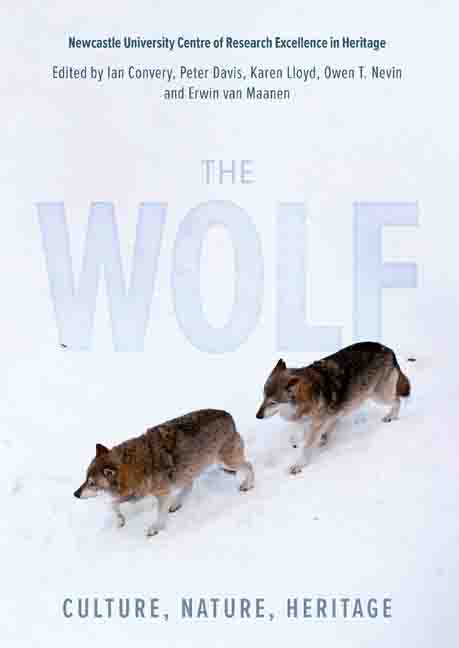Book contents
- Frontmatter
- Dedication
- Contents
- List of Illustrations
- Preface and Acknowledgments
- List of Abbreviations
- Poem: Trophic Cascade by Camille T Dungy
- Foreword
- Part I Imagining the Wolf
- Part II What Makes the Wolf
- Part III Return of the Wolf
- Part IV Personal Encounters
- Afterword: The Ecological Disadvantage of Living on an Island
- Glossary
- List of Contributors
- Index
32 - The Helsfell Wolf
Published online by Cambridge University Press: 10 January 2024
- Frontmatter
- Dedication
- Contents
- List of Illustrations
- Preface and Acknowledgments
- List of Abbreviations
- Poem: Trophic Cascade by Camille T Dungy
- Foreword
- Part I Imagining the Wolf
- Part II What Makes the Wolf
- Part III Return of the Wolf
- Part IV Personal Encounters
- Afterword: The Ecological Disadvantage of Living on an Island
- Glossary
- List of Contributors
- Index
Summary
From my study window I regularly watch jackdaws in their evening roosts, swirling above the rooftops and over the summit of Kendal Fell. Just across the road from the house a footpath leads up past the allotments and on through sheep-grazed fields. Above the big field the path divides, one way leading towards the summit of the fell and the other to two small areas of woodland. Some years ago I came across a story about a cave hidden away in the farthest woodland that was of huge archaeological importance. Amongst the bones excavated from the cave was a local ‘celebrity’, the ‘Helsfell Wolf,’ named after a now little used name for the fell itself.
In the 1880s the master chairmaker and amateur archaeologist John Beecham spent five summers excavating here. Beecham was one of a band of amateur archaeologists inspired by Sir William Boyd Dawkins, a Manchester-based archaeologist whose 1874 publication Cave Hunting offered advice to amateurs on the best ways to set about excavation. The book detailed some of the new and exciting archaeological finds being used to determine aspects of early human life. In the second half of the 19th century, popular science, journalism and public interest all keenly followed this area of burgeoning research. Knowing very little about the wolf – or the cave for that matter – I went to meet the curator at Kendal Museum, the Helsfell wolf 's home.
‘We’re a small museum’, Carol Davies said as she led me up the curving staircase. We entered a room packed high with birds in glass cases, an albatross, iridescent hummingbirds, and boxes of butterflies, pinned. Carol is a proud advocate of (or more, a fervent defender of ) the museum and its archives. Like so many small local museums, Kendal's collection includes objects whose significance is of national importance.
Carol opened up an image of the wolf on her computer.
‘It doesn't exactly look like a wolf ‘, I said, taking in the skeleton's hunched physique. In this arrangement, the animal it once was appeared far more greyhound than wolf.
‘Those Victorians were an enthusiastic bunch,’ Carol said, ‘if somewhat unsophisticated. You can see how they’ve grappled with the articulation of the skeleton, but it's all gone horribly wrong.’
- Type
- Chapter
- Information
- The WolfCulture, Nature, Heritage, pp. 371 - 376Publisher: Boydell & BrewerPrint publication year: 2023

